Nephrolepis exaltata ‘Fluffy Ruffles’ is a lusciously thick evergreen fern with beautiful sword-shaped fronds.
It truly is as fluffy and ruffly as they come.
You’ll already know its larger native form – which goes by both Boston Fern and Sword Fern – as it’s a super popular houseplant (and has been since everyone caught Fern Fever in the Victorian period).
Thankfully for us, the “Fluffy Ruffles Fern’ is a dainty dwarf variety. Unlikely to grow beyond 12 inches, it’s perfect for squeezing onto an almost full window sill or livening up a terrarium.
Read on to learn how to care for it in this no-fluff (lol) care guide!
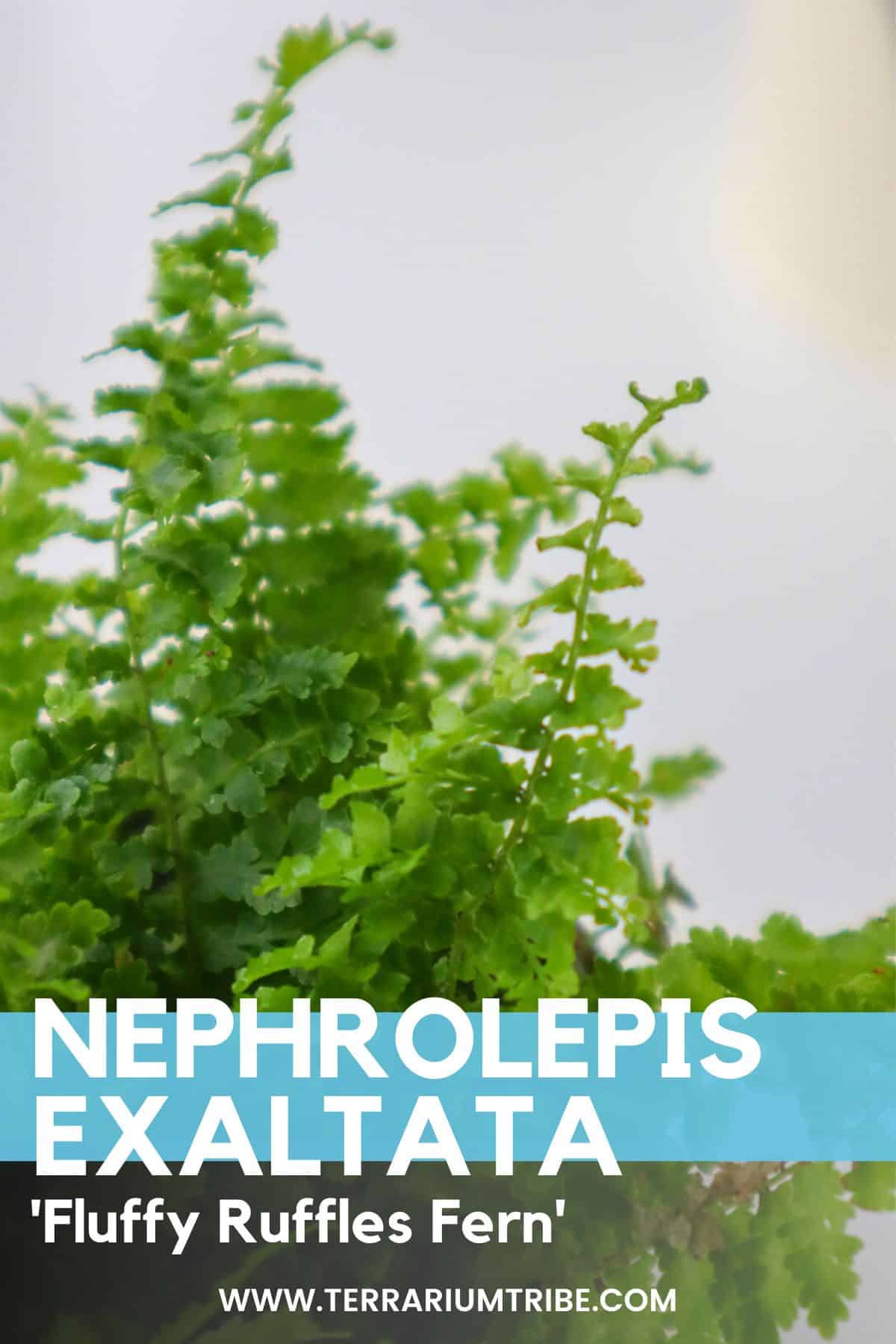
Where to Buy Nephrolepis exaltata ‘Fluffy Ruffles’
See the links below to purchase from reputable terrarium plant shops and marketplaces (may include affiliate links).
Fluffy Ruffles Fern Indoor Care & Growth
| Plant Type | Fern |
| Lighting | Medium – high indirect light |
| Temperature | 60-80°F (18-26°C) |
| Watering | Regular, even moisture |
| Humidity | High humidity (60-90%) |
| Growth | 6-12 inches |
Light Requirements
The Fluffy Ruffles Fern will do best with plenty of bright, indirect light.
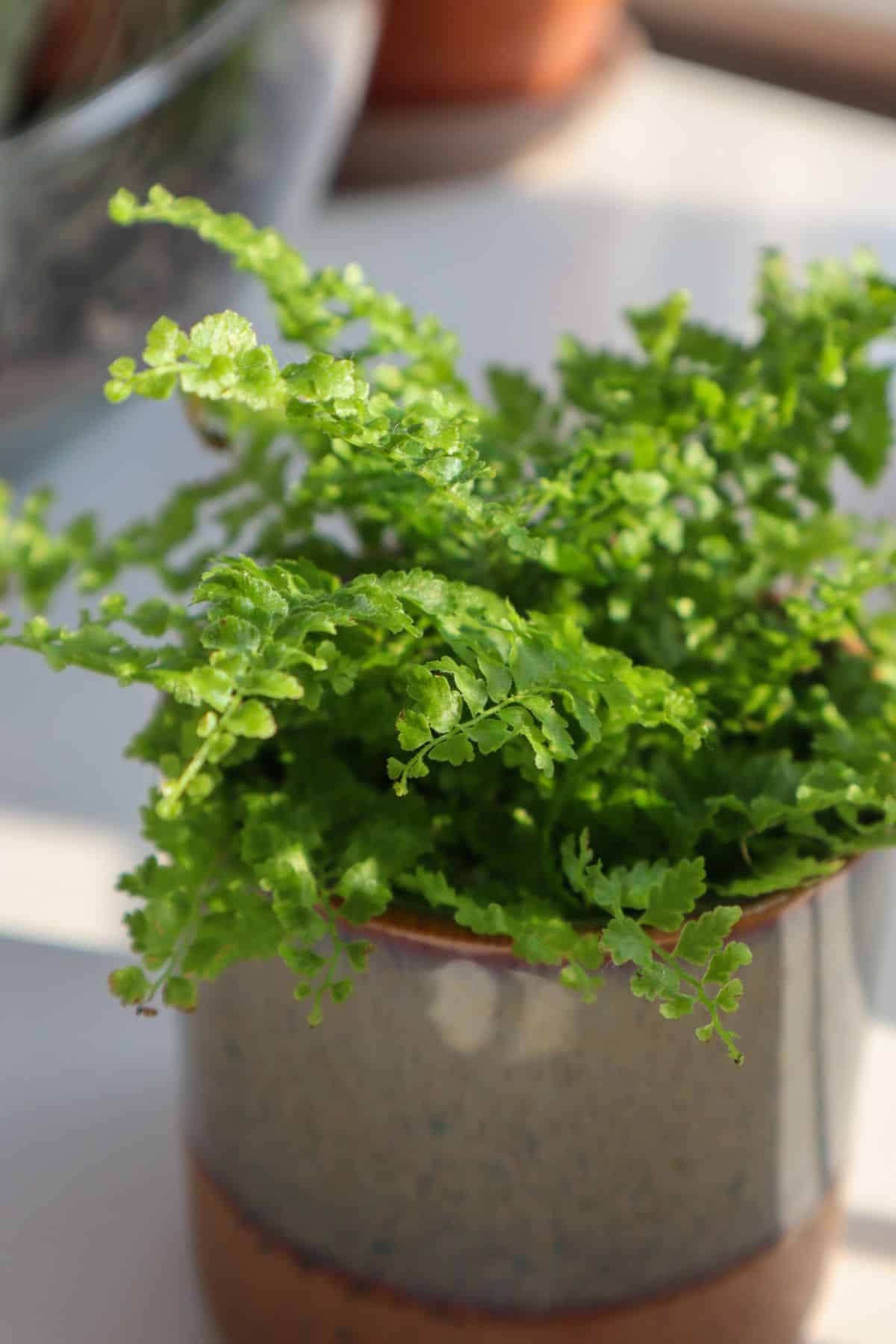
While Sword Ferns are native to the Americas, they grow just about everywhere in the tropics. So you can rest assured that they are hardy plants that can handle a few hours of direct sunlight.
- A North-facing or East-facing window sill is best if you live in the Northern hemisphere.
- If you only have West-facing or South-facing windows up for grabs, keep your plant a good few feet away from the light source.
- Live in the Southern Hemisphere? Just reverse my advice.
Watering
Like most ferns, this plant will grow best with constant, even moisture. It can be quite sensitive and has very little drought tolerance.
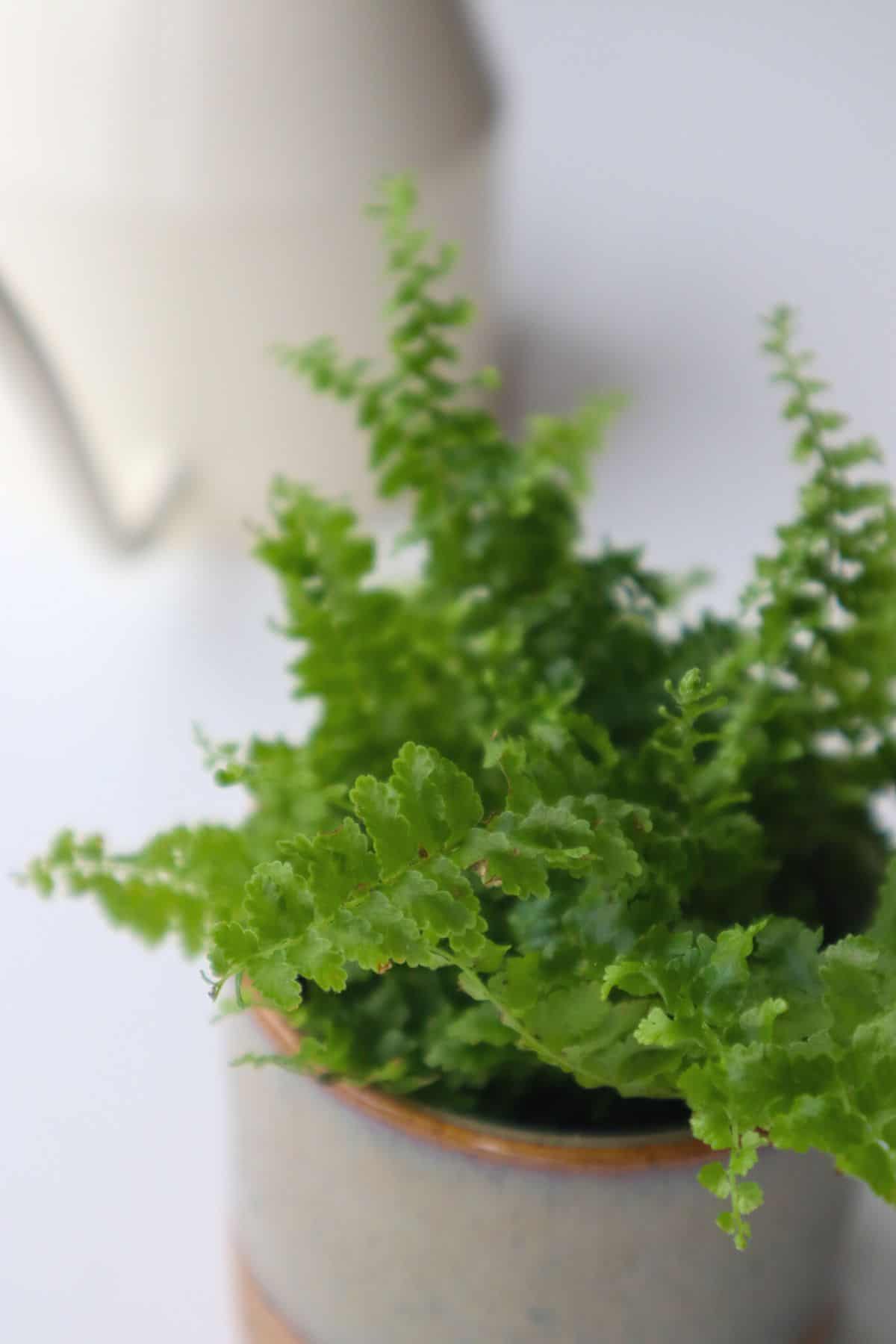
Because it’s such a thirsty plant, I’d recommend staying clear of terracotta pots. Terracotta is porous, so it will take some moisture from the soil. Great for some plants but not ideal for ferns.
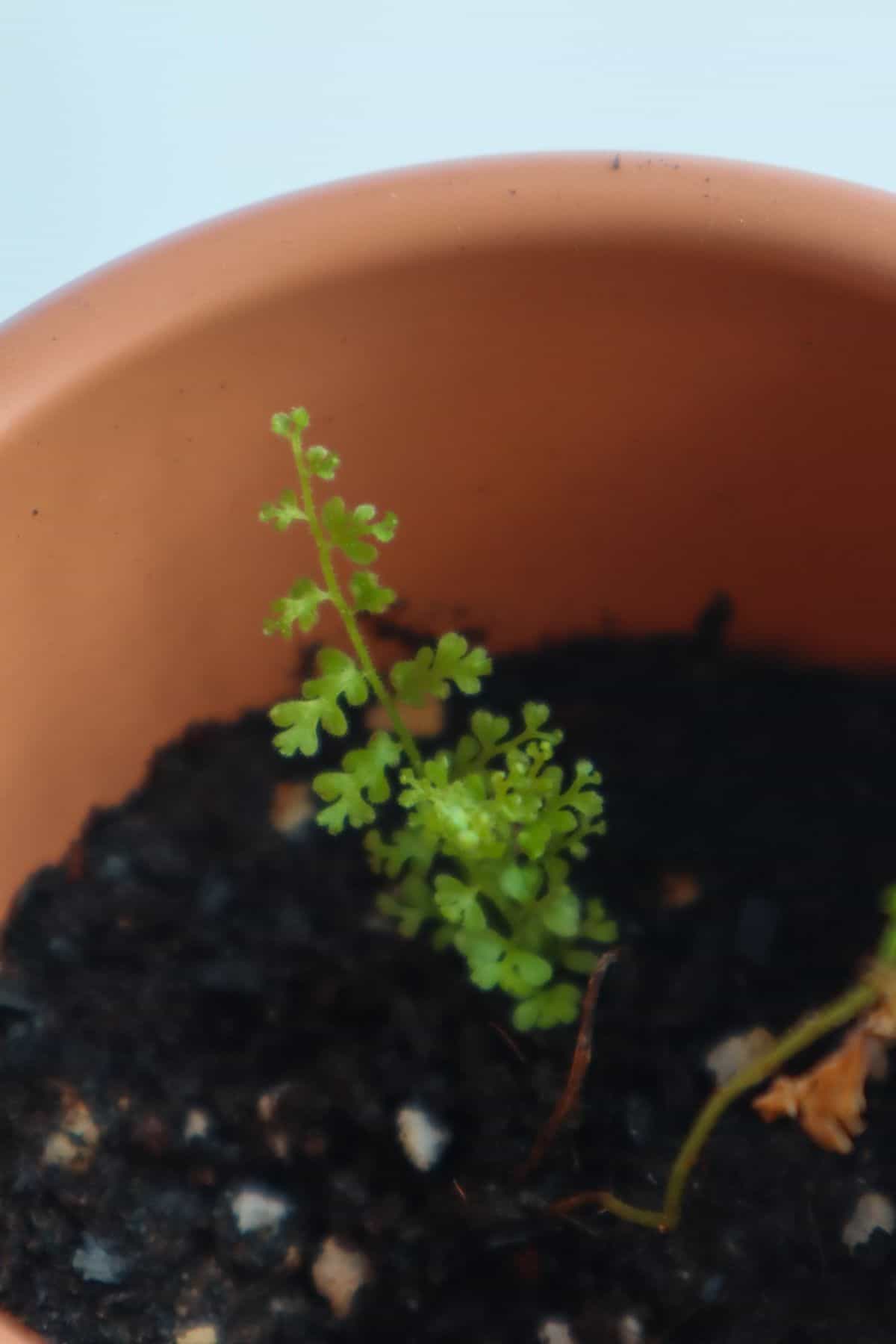
Provided that you have adequate drainage (a pot with a drainage hole and tray), you can’t really overdo it.
Remember to tip away any excess in the tray – it’s often an epiphyte in its native environment, so it doesn’t love saturated soil. If you see the leaves turning brown at any point, you’ve likely overwatered it.
Substrate & Soil
Originating from humid swamp and forest environments (unsurprisingly not Boston, despite the common name), Nephrolepis exaltata prefers a substrate rich in moisture and organic materials.
Coco coir is a perfect base for your soil mix – it stays springy and retains moisture.
Any variation of the ABG mix is likely to work well. Opt for one that doesn’t include peat, as it’s extremely harmful to the environment.
👉 Our Premium Terrarium Substrate is a perfect fit here!
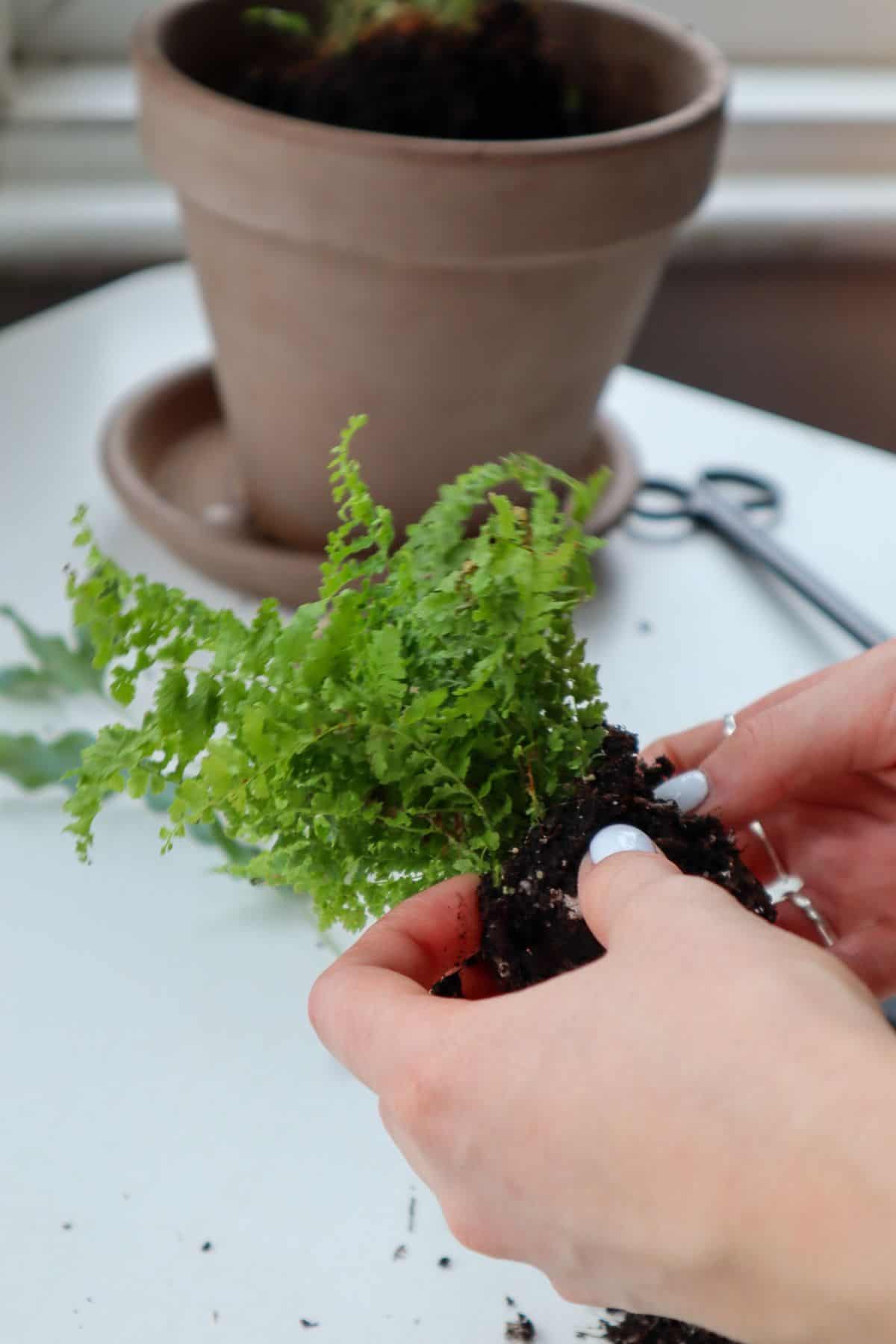
Temperature & Humidity
Sword Ferns love a humid environment and will need a bare minimum of 50% to grow properly, though it’ll appreciate as much as possible.
Anything lower can result in yellowing or shedding foliage.
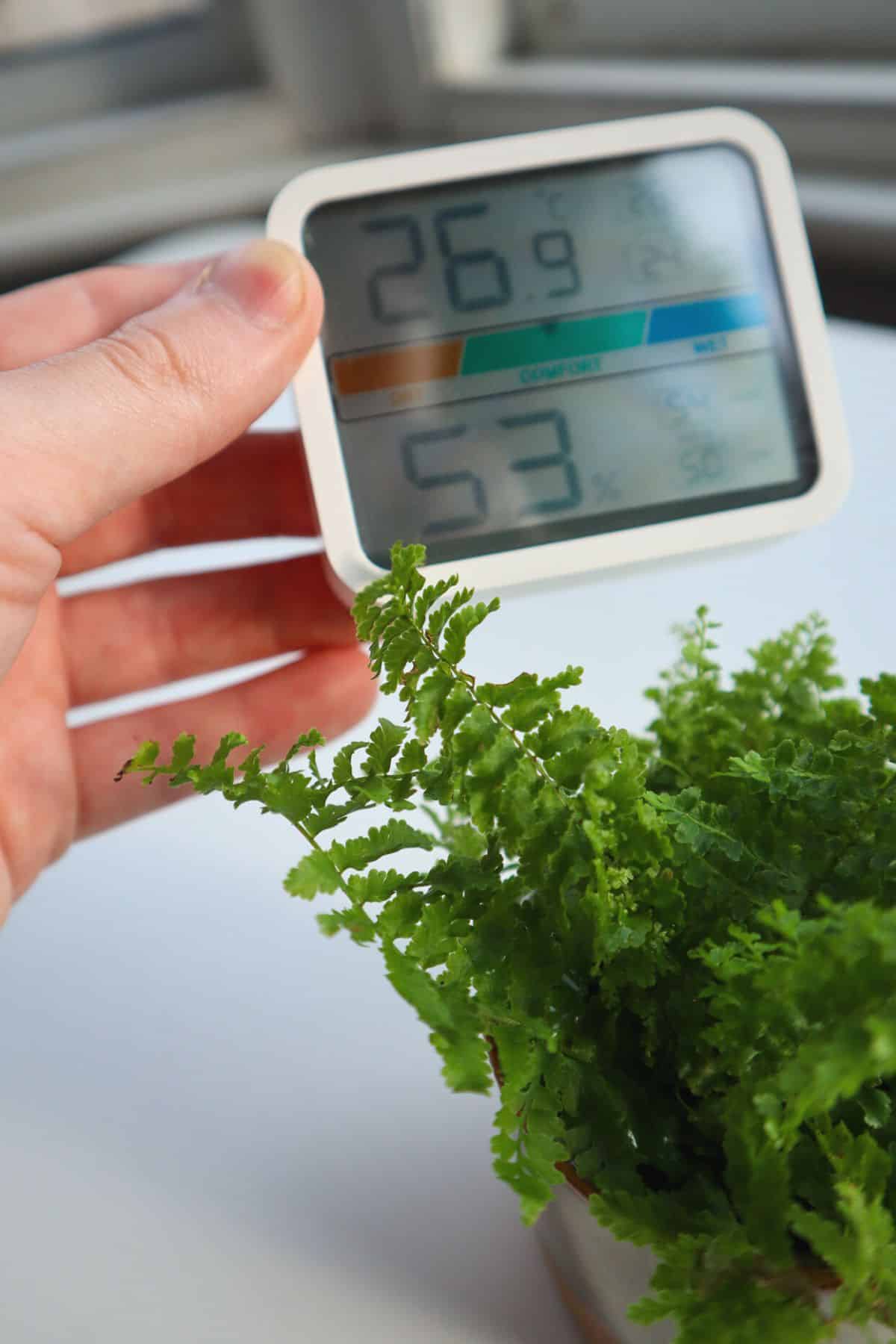
Naturally, this makes this plant a perfect fit for terrarium life. I’ve kept coming back to it again and again since I began building them.
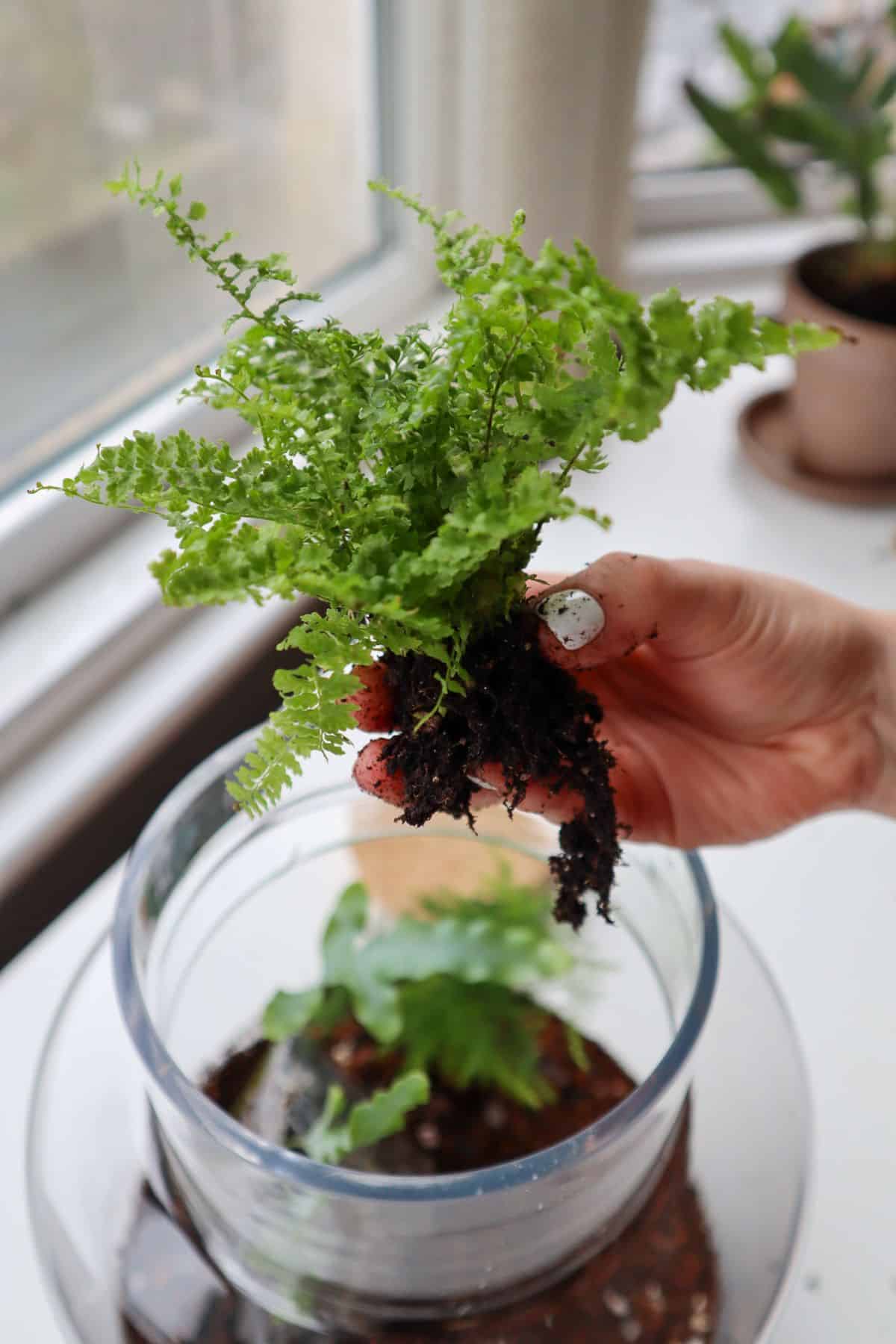
On the other hand, the temperature is unlikely to be a cause for concern.
They are tropical plants and will do well in warmer temperatures, but they do great when they’re a bit cooler too. Hurrah!
Does that mean you plant the Fluffy Ruffle Fern outside? Maybe, if you live in a year-round warm, humid climate. It’s not a frost-hardy plant, so it’s not going to handle a typical winter.
Growth
The main benefit of the Fluffy Ruffle Fern vs. the Boston Fern is its minute size.
However – under the right conditions – Nephrolepis exaltata can still grow fairly quickly.
It’ll never rival its larger Nephrolepis cousins (and shouldn’t ever really exceed a foot in height), but it can outgrow smaller terrarium containers.
All that said, it’s still a great pick for terrariums of all sizes. If it gets too unruly, you can always trim it back as you like.
How to Propagate the Fluffy Ruffles Fern
Sword ferns reproduce via spores, though it’s not true of all varieties, as some are sterile.
I can’t find any good information on what varieties are spore-producing and aren’t.
However, I can tell you that I planted a singular fern (sold under the name Fluffy Ruffles) in a terrarium, and months later, I had at least five baby ferns dotted around.
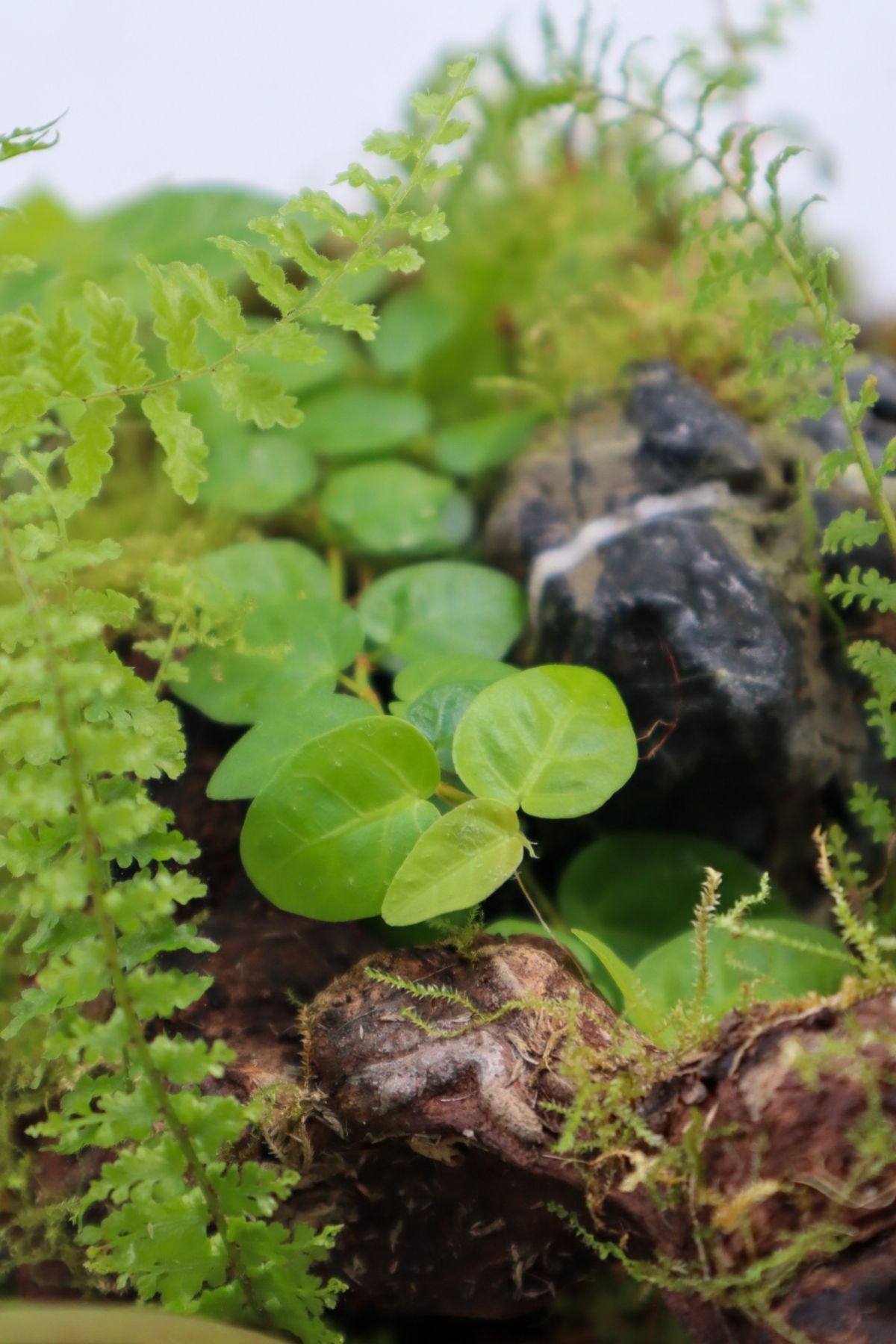
The actual process of intentionally cultivating ferns via spores is COMPLEX, though. I went down a bit of a YouTube rabbit hole and ultimately decided it’s not worth it.
Thankfully, there’s another way to propagate Sword Ferns, and that’s through division.
Divide a healthy plant, ensuring each division has its own section of healthy roots and plant as you normally would.
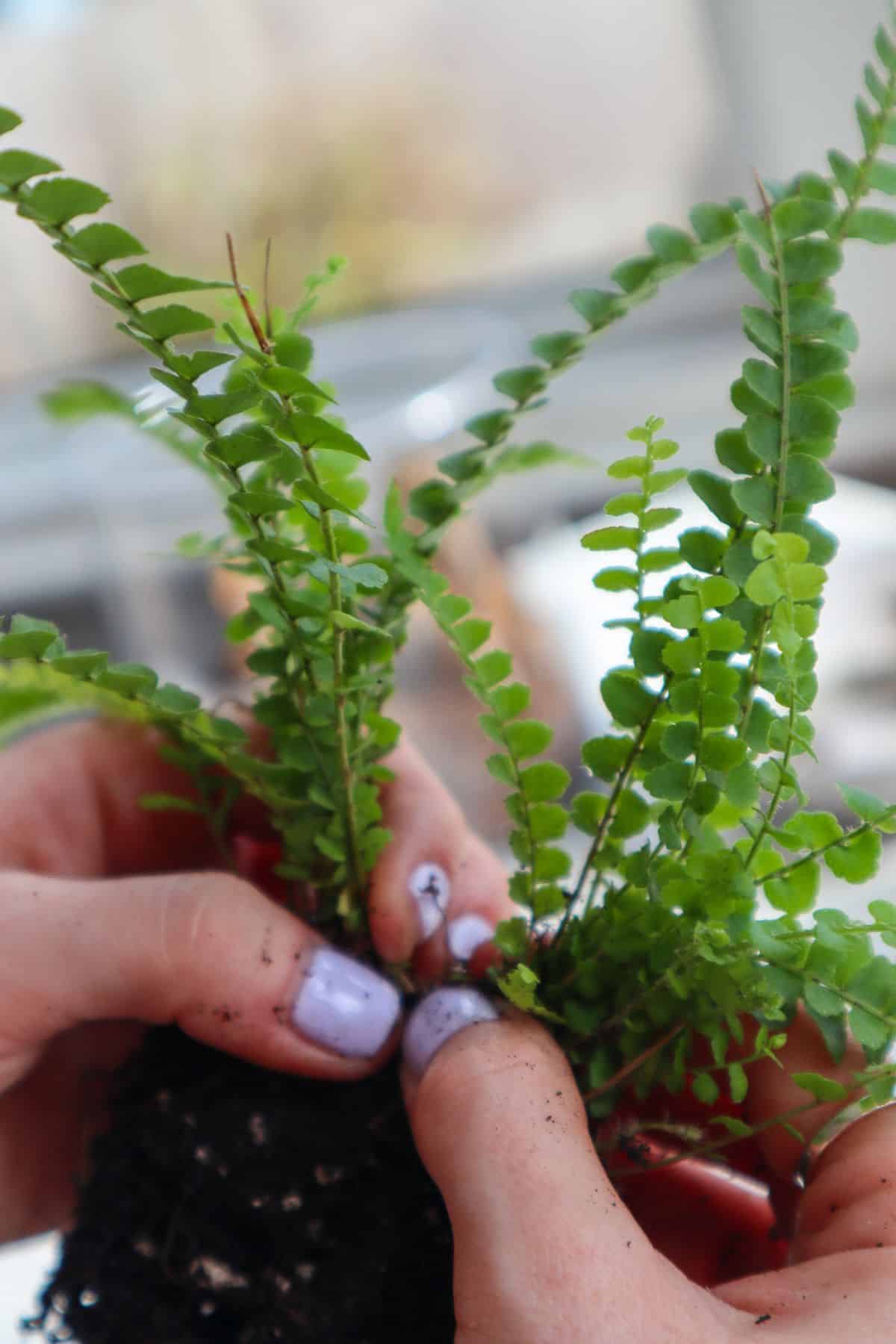
Varieties & Similar Plants
Honestly, even to the trained eye, many Boston Fern varieties look exactly the same. So, I’d take the different types with a pinch of salt.
There are countless Nephrolepis plants, so I’ll keep this focused on more petite varieties.
- Nephrolepis exaltata ‘Marisa’ is reportedly another dwarf Sword Fern, but it’s not as common as the Fluffy Ruffles, and I can’t for the life of me tell them apart.
- Nephrolepis Smithii, on the other hand (which I’ve also heard go by Cotton Candy and Suzie Wong), is noticeably different. Though it’s hard to believe, it’s even bushier and frillier.
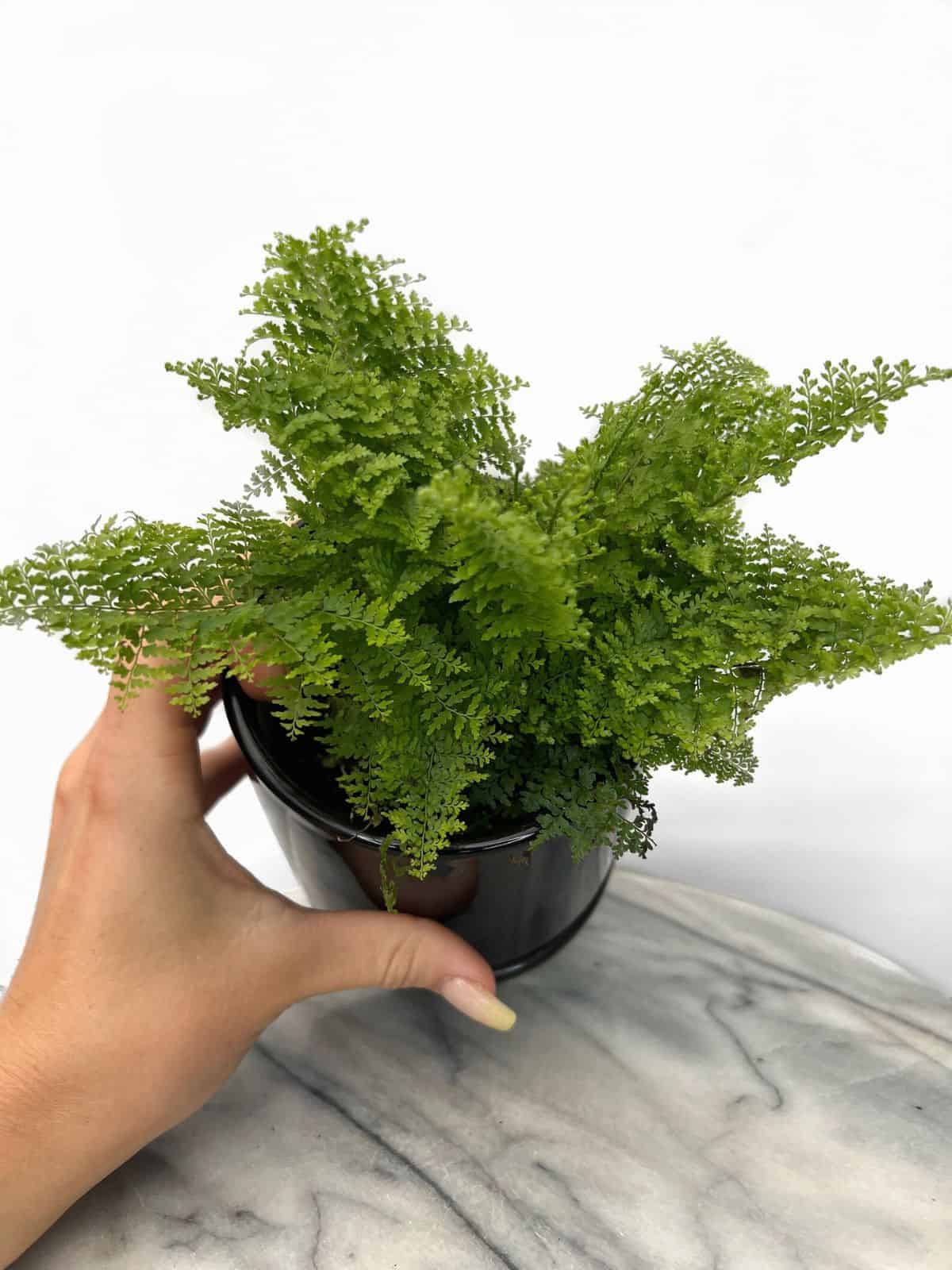
Finally, we have Nephrolepis cordifolia (Lemon Button Fern), a beloved favorite of mine.
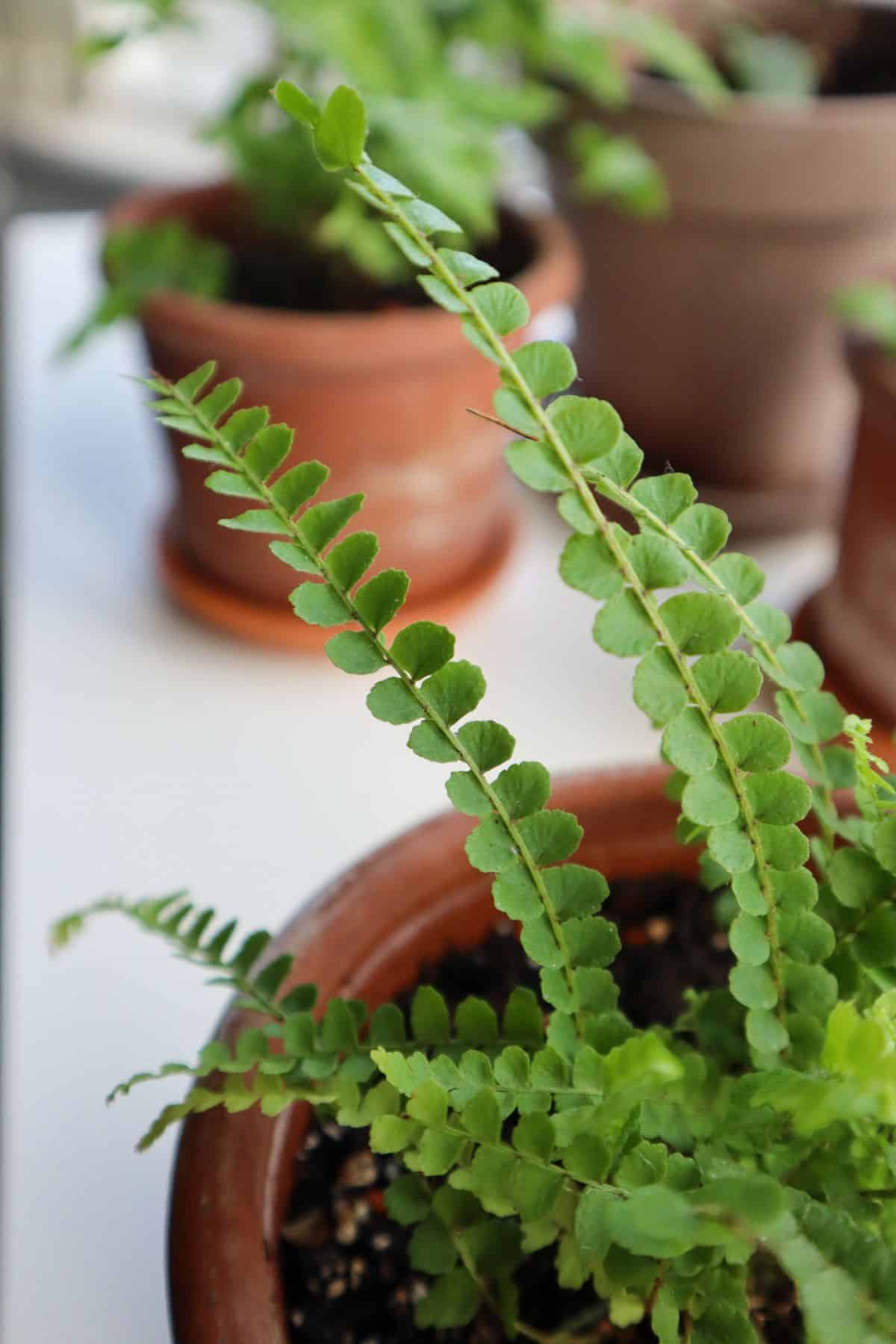
Alternatively, outside the Nephrolepis family, you can find other beautiful lance-shaped ferns, e.g., the Korean Rock Fern.
Safety / Toxicity
Rest assured, the Fluffy Ruffles Fern – along with all its Nephrolepis family – is a completely non-toxic plant. That means they’re safe in homes with cats, dogs, and wandering little humans.
